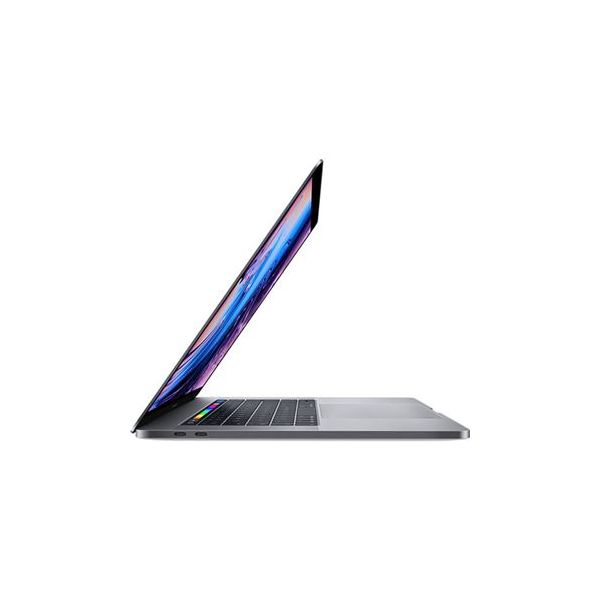Trackpad gestures
For more information about these gestures, choose Apple menu > System Preferences, then click Trackpad. You can turn a gesture off, change the type of gesture, and learn which gestures work with your Mac.
Aug 27, 2020. Apple MacBook Pro 15-inch w/ Touch Bar (Mid 2018), 220ppi Retina Display, 6-Core Intel Core i7, 256GB PCIe SSD, 16GB RAM, macOS 10.13, Space Gray (Renewed) Apple MacBook Pro 15in Core i7 2.8GHz Retina (MGXG2LL/A), 16GB RAM, 1TB Solid State Drive (Renewed). MacBook Pro includes Touch Bar with integrated Touch ID sensor. STORAGE: MacBook Pro is slim and sleek with a 256GB SSD storage and features Radeon Pro. Magic Keyboard A powerful arrangement. The 13-inch MacBook Pro is designed to let you do everything faster and more efficiently. The new Magic Keyboard features a refined scissor mechanism with 1 mm of travel, delivering the best typing experience ever on a Mac notebook.
Trackpad gestures require a Magic Trackpad or built-in Multi-Touch trackpad. If your trackpad supports Force Touch, you can also Force click and get haptic feedback.
Secondary click (right-click)
Click or tap with two fingers.
Smart zoom
Double-tap with two fingers to zoom in and back out of a webpage or PDF.
Zoom in or out
Pinch with two fingers to zoom in or out.
Rotate
Move two fingers around each other to rotate a photo or other item.
Swipe between pages
Swipe left or right with two fingers to show the previous or next page.
Open Notification Center
Swipe left from the right edge with two fingers to show Notification Center.
Three finger drag
Use three fingers to drag items on your screen, then click or tap to drop. Turn on this feature in Accessibility preferences.
Look up and data detectors
Tap with three fingers to look up a word or take actions with dates, addresses, phone numbers, and other data.
Show desktop
Spread your thumb and three fingers apart to show your desktop.
Launchpad
Pinch your thumb and three fingers together to display Launchpad.
Mission Control
Swipe up with four fingers2 to open Mission Control.
App Exposé
Swipe down with four fingers2 to see all windows of the app you're using.
Swipe between full-screen apps
Swipe left or right with four fingers2 to move between desktops and full-screen apps.
Mouse gestures
For more information about these gestures, choose Apple menu > System Preferences, then click Mouse. There you can turn a gesture off, change the type of gesture, and learn which gestures work with your Mac. Mouse gestures require a Magic Mouse.
Secondary click (right-click)
Click the right side of the mouse.
Smart zoom
Double-tap with one finger to zoom in and back out of a webpage or PDF.
Mission Control
Double-tap with two fingers to open Mission Control.
Swipe between full-screen apps
Swipe left or right with two fingers to move between desktops and full-screen apps.
Swipe between pages
Swipe left or right with one finger to show the previous or next page.
1. You can turn off trackpad scrolling in Accessibility preferences.
2. In some versions of macOS, this gesture uses three fingers instead of four.
The Touch Bar of your MacBook Pro changes to show the function keys for you to select, and then it returns to its previous state when you release the Function key.
For some apps, you can make the function keys display permanently in Touch Bar:
- In System Preferences, choose Keyboard.
- Click Shortcuts.
- From the left sidebar, select Function Keys.
- Click the “+” symbol, then navigate to the app and select it.
Now when you open or switch to this app, Touch Bar always displays the function keys.
You can also use an on-screen keyboard to access function keys:
- From System Preferences, select Keyboard.
- Check “Show Keyboard, Emoji and symbol viewers in menu bar”.
- Choose the viewer icon in the menu bar, then choose Show Keyboard Viewer.

An on-screen keyboard appears with function keys that you can click.
Apple Mac Pro Touch Screen
Using function keys in Windows
Apple Mac Pro Touch Screen
When you use Boot Camp to run Windows on your MacBook Pro, the function keys work the same as they do in macOS. Hold down the Function key on your keyboard, and the function keys appear.
Apple Mac Pro Best Buy
You can also use the Windows on-screen keyboard to access function keys:
- From the Windows menu, select the Windows Ease of Access menu item.
- Click On-Screen Keyboard.
- Click the fn key. The function keys appear in the on-screen keyboard.
What Is Apple Mac Pro Touch Bar
You can also make the function keys appear continuously in the Touch Bar while using Windows, without having to hold down the Function key:
Apple Mac Pro 2019 Touchbar
- In the Windows System Tray, click the up arrow to show additional icons.
- Click on the dark grey diamond-shaped Boot Camp icon.
- Select Boot Camp Control Panel from the menu that appears.
- Click Yes to allow the Control Panel to run.
- Click the Keyboard tab.
- Select 'Use all F1, F2, etc. keys as standard function keys' to make the function keys appear continuously in the Touch Bar all the time. Deselect the checkbox to return the function keys to standard behavior.
